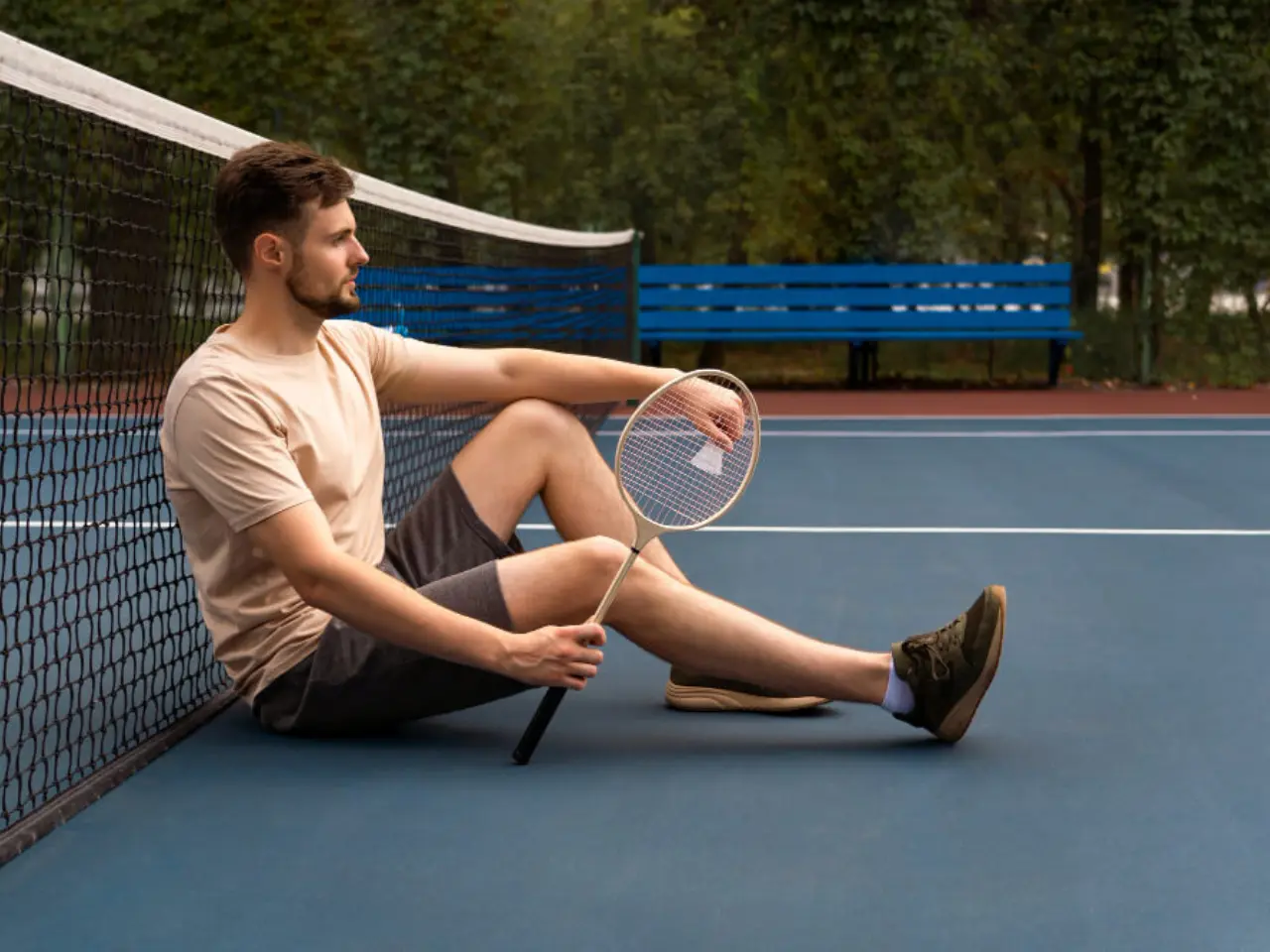Tennis is fast, fun, and a full-body challenge—but if your knees start complaining every time you step off the court, it’s fair to wonder: is this sport doing more harm than good?
The honest answer? It can be tough on your knees—but it doesn’t have to be. When your body is conditioned properly, and your movement patterns are dialed in, tennis can be a lifelong sport without destroying your joints.
At Proactive Health, we see this scenario all the time: players who love the game but are sidelined by nagging knee pain, swelling, or stiffness. Whether you’re a weekend warrior or a seasoned competitor, knee discomfort doesn’t have to be the norm. Let’s break down why your knees are vulnerable, what might be going wrong, and what you can do to stay on the court pain-free.
A Quick Breakdown: Why the Knee Takes the Hit
Your knees do a lot of heavy lifting in tennis—literally. The joint connects your femur (thigh bone), tibia (shin bone), and kneecap (patella), and it’s supported by key structures like:
- Ligaments (ACL, PCL, MCL, LCL)
- Tendons
- Meniscus (cartilage that cushions the joint)
Now layer in the demands of tennis:
- Quick lateral moves
- Rapid acceleration and deceleration
- Rotational torque on pivots and serves
- Hard-court surfaces that offer zero forgiveness
If any part of that system is off—weak muscles, poor footwork, or misalignment—your knees bear the brunt.
The Most Common Knee Injuries We See in Tennis Players
If your knees are bothering you after matches or practices, you’re not imagining it. Here are the most common knee issues tennis players face:
Patellar Tendonitis (Jumper’s Knee)
Overuse, hard landings, and fast court movements can inflame the tendon that connects your kneecap to your shinbone. It usually shows up as pain just below the kneecap.
Meniscus Tears
Quick changes in direction can twist the knee abruptly, catching the meniscus in the crossfire. Some tears are minor; others may cause your knee to lock or swell significantly.
Runner’s Knee (Patellofemoral Pain Syndrome)
When the kneecap doesn’t glide properly over the joint, it creates irritation and pain—especially when squatting, going down stairs, or during long matches.
ACL/MCL Sprains and Tears
Sudden pivots or awkward landings can put serious stress on these key stabilizing ligaments. A pop or sharp pain is often a red flag for these more serious injuries.
Arthritis or Degenerative Wear
Players with a history of knee injuries—or those entering their 40s and beyond—may notice increased joint stiffness or flare-ups after intense matches.
Is Tennis the Problem? Or Is It Something Else?
Let’s clear this up: tennis isn’t inherently bad for your knees. What causes issues is when your body isn’t properly prepped for the physical demands.
We’ve treated players in their 60s who play five times a week without pain. And we’ve seen younger athletes sidelined by major knee injuries after just one bad landing. It comes down to your mechanics, strength, and how well your knees are supported by the rest of your body.
Signs Your Knees Might Be in Trouble
Not all pain hits you suddenly. A lot of knee issues build up gradually. Here’s what to watch for:
- Swelling after matches
- Dull aches behind or beneath the kneecap
- Sharp discomfort when pivoting or lunging
- Clicking, popping, or grinding sensations
- Stiffness that makes warmups or cooldowns harder
If you’re noticing these symptoms, don’t write them off as “just soreness.” They’re your body’s way of flagging a problem before it becomes something bigger.
How We Diagnose Knee Pain at Proactive Health
You don’t need to wait for an MRI to get clarity. At Proactive Health, our team starts with a detailed movement analysis. We look at how your hips, ankles, and core are working together—or not—to support your knees.
Our assessments include:
- Joint mobility testing
- Muscle activation and strength balance
- Real-time analysis of your form, posture, and gait
If we see signs that imaging is needed, we’ll refer you to the appropriate provider. But in many cases, knee pain is driven by biomechanical issues and muscle imbalances—something we specialize in correcting.
How Physical Therapy Helps You Stay in the Game
Our job isn’t to tell you to stop playing. It’s to get you back out there with less pain, more confidence, and fewer injuries.
Here’s how we do that:
1. Hands-On Therapy
Targeted manual work helps release tight muscles, reduce inflammation, and increase circulation where your knees need support most.
2. Strength + Stability Work
Weak glutes, quads, or hamstrings can all destabilize the knee. We build a custom strength plan based on your movement profile—not just generic rehab exercises.
3. Restoring Mobility
If your hips or ankles are tight, they pass the stress on to your knees. We help unlock those joints to improve overall function and reduce strain.
4. Movement Retraining
Faulty squats, lunges, or footwork patterns can overload your knees. We teach you to move smarter—on and off the court.
5. Return-to-Sport Programs
We don’t stop at symptom relief. If your goal is to get back to competing or training at a higher level, we design a progressive, game-specific program to get you there safely.
What You Can Do Right Now to Protect Your Knees
Even if you’re not in pain yet, these small steps can make a big difference:
- Warm up before you play—include dynamic movements, not just static stretches
- Wear tennis-specific shoes with good lateral support
- Do mobility work for your hips and ankles regularly
- Train single-leg strength (lunges, step-downs) with good form
- Don’t “push through” recurring pain or swelling—get it checked
Long-Term Prevention: How to Play for the Long Haul
Want to make tennis a lifelong sport? It starts with building a foundation that supports your knees no matter how hard you play.
At Proactive Health, here’s what we recommend:
- Establish a pre-match prep routine to activate the right muscles
- Stick to a recovery plan (ice, rest days, foam rolling)
- Mix in low-impact cross-training like swimming or cycling
- Schedule a movement screen once or twice a year to catch issues early
The best part? Most knee problems are completely preventable—if you catch them early and have a smart game plan.
Bottom Line: Tennis Isn’t the Enemy — Lack of Prep Is
So, is tennis bad for your knees? Not if your body is ready for it. With proper strength, mobility, and guidance, your knees can handle the quick moves, stops, and starts of the sport without pain or breakdown.
At Proactive Health, we’re here to help you stay active, competitive, and pain-free. Whether you’re working through an injury or just want to prevent one, we’ll build a plan around your body and your goals.
Ready to get your knees game-ready? Schedule a full movement assessment with our team today. Let’s make sure your next match doesn’t end with an ice pack.



